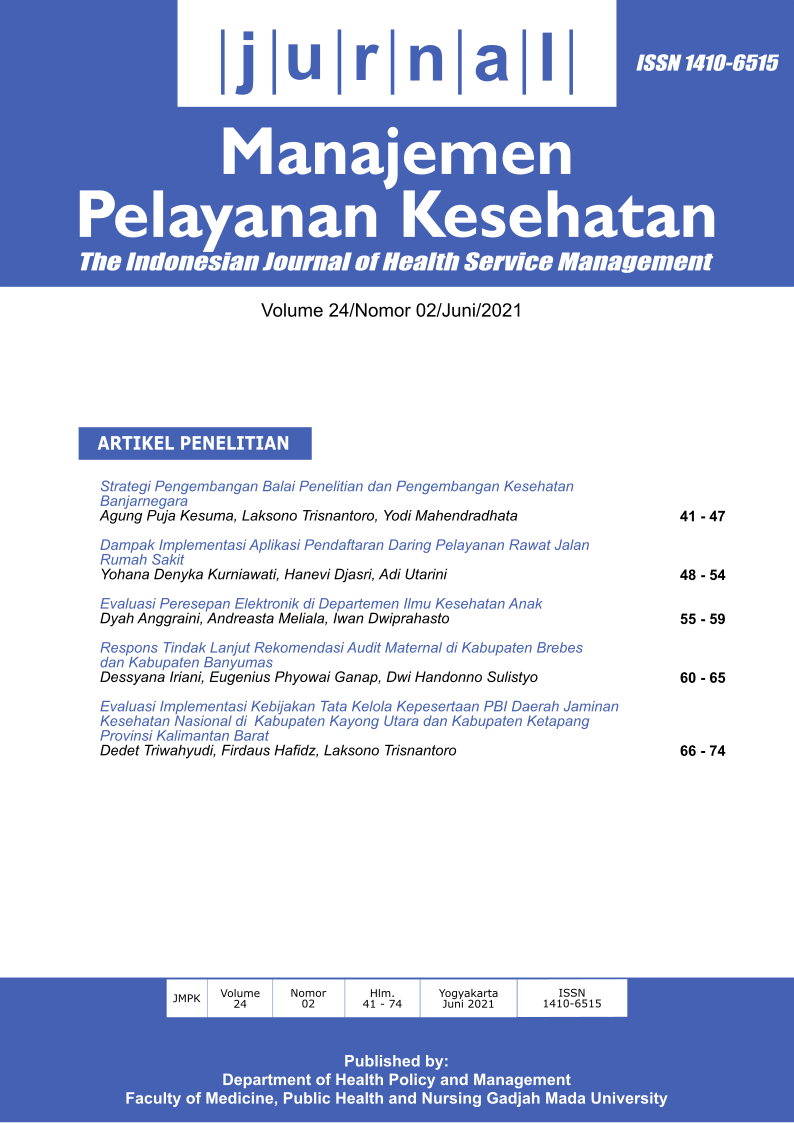EVALUASI PERESEPAN ELEKTRONIK DI DEPARTEMEN ILMU KESEHATAN ANAK
EVALUATION OF ELECTRONIC PRESCRIBING IN PEDIATRIC DEPARTMENT
Abstract
Background:
Hospitals can prevent errors in medical actions or pharmaceutical services to patients called medication errors. One of the incidences of medication errors that are still high in Indonesia is the prescribing phase. So, currently, many hospitals have replaced manual prescription writing with electronic prescribing systems, including at Dr. Hospital. Cipto Mangunkusumo (RSCM).
However, prescribing errors are still often found, especially in pediatric patients’ prescriptions.
Objective: To evaluate the implementation of electronic prescribing and measure the results of personnel interventions on electronic prescribing in pediatric patients.
Methods: Experimental with a quasi-experimental design, the one
group pretest-posttest design. The research was conducted from
December 2019 to January 2020 in pediatrics. The research subjects were 100 doctors participating in the Specialist Medical Education Program (PPDS). Training subjects carried out the intervention to write electronic prescriptions and provide feedback in the form of personal letters. Reassessment of the incidence of prescribing errors was carried out after four weeks.
Results: The incidence of prescribing errors decreased after the intervention. (p = 0.05). The most types of prescription errors are
the wrong dosage, strength, frequency. Prescribing errors in perinatology ward, pediatric inpatient ward and polyclinics decreased after
intervention, while prescribing errors in the emergency room remained. There is a significant relationship between the provision of intervention with the level of education (p = 0.001). PPDS mid-level doctors make more prescribing errors in almost all types of errors
and workplaces than junior and senior PPDS doctors. The results of the calculation of prescribing error pre and post intervention shows that giving an intervention can reduce the risk of prescription errors by up to 37%.
Conclusion: Personnel intervention in education and providing
feedback plays a role in reducing the incidence of prescribing errors. Education and providing feedback should be done regularly. In addition, it is necessary to add an electronic prescription support system to support the reduction of prescribing errors.




